The epidemic this year has accelerated the market adaptation for innovation by companies placed under extreme conditions. With so many game conferences canceled this year, ChinaJoy, the only large-scale offline exhibition held in the Chinese game industry, was able to bring their event not only to the thousands that came to Shanghai but to everyone all over the country by launching ChinaJoy Plus.
Compared with previous events, the most significant innovation of this year's ChinaJoy lies in the use of new technologies such as live broadcasts and short videos, launched on ChinaJoy Plus, allowing players from all over the country to watch the exhibition online.

As the exclusive technology partner of ChinaJoy Plus, Cocos combined the advantages of online features and offline exhibitions to establish an event that connected gamers to game content at the event and much more.
The innovative cooperation between the Cocos engine and ChinaJoy Plus this year has also received an exclusive report from the UK's largest news company, BBC.
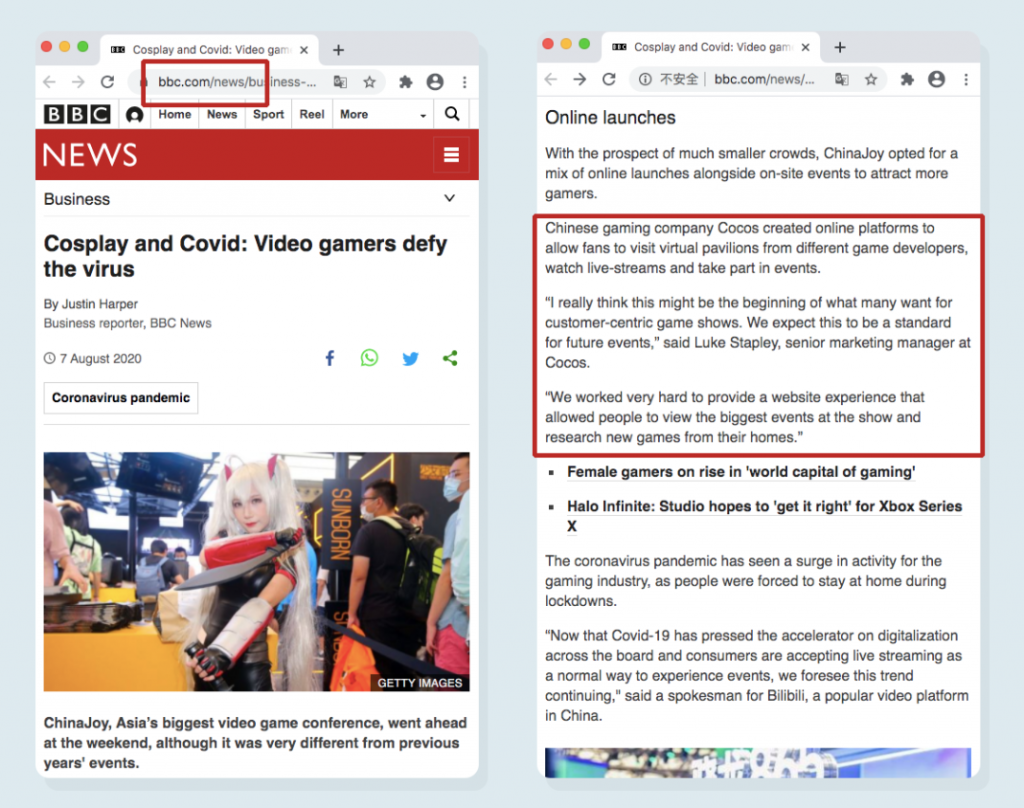
Cocos Senior Marketing Manager Luke Stapley said in the interview, "We worked very hard to provide a website experience that allowed people to view the biggest events at the show and research new games from their homes."
Today, ChinaJoy Plus project technical leader and Cocos senior project manager Yang Zhongyi accepted an exclusive interview so we can learn more about how this large-scale online exhibition was created in only 2 months!

Our Interview
What technical support does Cocos provide for the first ChinaJoy Plus platform?
Zhongyi: Cocos provided all of the technical service and support for the ChinaJoy Plus event, including the setup of the event with cooperating channels, the assistance and integration of the cloud services, and the management and display of content by game companies during the event.
You told us it took more than two months to complete ChinaJoy Plus. From building to launching, what do you think was the main development issues you faced?
Zhongyi: One of the main difficulties is that the complex roles of participants lead to a large demand for the system. Moreover, ChinaJoy, as a big social event, has an unpredictable magnitude scale of users, which tests the overall back-end architecture design. The rest is a matter of time. Counting development, testing, external docking, etc. Two months made the project indeed urgent.
Can you share how you designed the frontend of ChinaJoy Plus?
Zhongyi: ChinaJoy is a world-renowned digital entertainment exhibition. Each exhibition includes hundreds of exhibitors and thousands of different types of content.
ChinaJoy Plus online exhibition also had in-depth cooperation with more than ten traffic platforms. Each participant has a role in the system that we need to take into account, and different systems will have different needs.
Based on the existing work we did for Cocos Play, we created a system that divides different participants into five important roles.
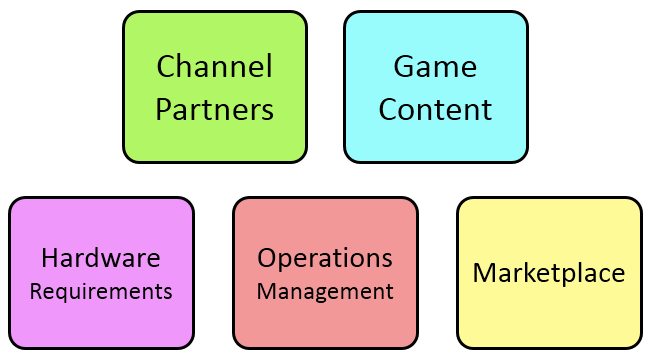
The needs of different partners and the content providers were placed into a content management system in 7 ways, including cloud games, gift packages, short videos, live broadcasts, and articles, as well as header images, banners, and lists.
For the front end, aiming at the attributes of ChinaJoy itself, the product design ideas came with five kinds of content distribution sections and four virtual pavilion modules building an overall product plan, thereby serving the various potential needs that may arise and the customization needed for different roles.

Speaking on the back-end architecture, how did you optimize it for the event?
Zhongyi: ChinaJoy Plus was built with in-depth cooperation with many top domestic traffic platforms. These top traffic platforms will undoubtedly bring a lot of users and exposure to ChinaJoy Plus.
Therefore, for the overall architecture design of the back-end, we have done key optimization and long-term server stress testing. Before going online, it reached the theoretical concurrency level of 400,000 actions per second.
The last stress test resisted hundreds of millions of server requests within a few minutes, which also provided a stable foundation for the launch of ChinaJoy Plus.
Compared with other online exhibitions, does ChinaJoy Plus have any particular design that differs from other user experiences?
Zhongyi: Cocos has been committed to pushing our game engine in more industries and usage scenarios. The online event format is a new direction we are trying.
In the overall plan design, to make users more interactive and participating, we have customized avatars for each player through the Cocos Creator's new 3D engine. (Editor note: This engine will be available with Cocos Creator 3.0 in the fall)
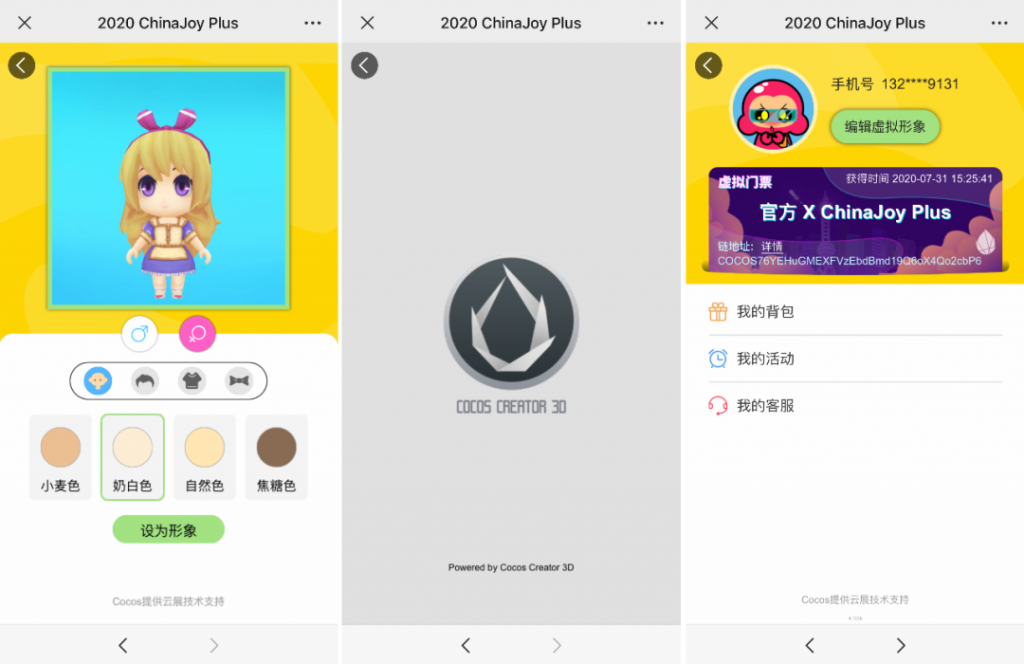
In the initial vision, we expect that scenes from the event can be perfectly recreated through the Cocos Creator 3D engine, virtual images can be used to give users their own way to explore different theme exhibition areas and virtual exhibition halls, and give them gamified activities. This allows online exhibitions to be more game-like and interactive, giving users and some new experiences.
However, due to the overall development cycle, some designs had to be simplified. But this didn’t delay Cocos' continuous exploration into bringing this technology to more industries, more scenarios, and more directions.
Finally, I would like to thank the Cocos Creator 3D engine team, Cocos Analytics data services team, and other Cocos departments for their support!
What gamers see in ChinaJoy Plus
ChinaJoy organizer, Shunwang Technology Vice President Xu Jun told the media, "As early as last year, we proposed to integrate online and offline to create ChinaJoy that will never end. This idea has accelerated this year. " In other words, ChinaJoy Plus will not end with the end of the ChinaJoy event. Players across the country can still browse and review the exciting content of the exhibition through the ChinaJoy Plus platform.
When users open the main interface of ChinaJoy Plus, the site is composed of two different components: four virtual pavilion modules and five content-based sections:
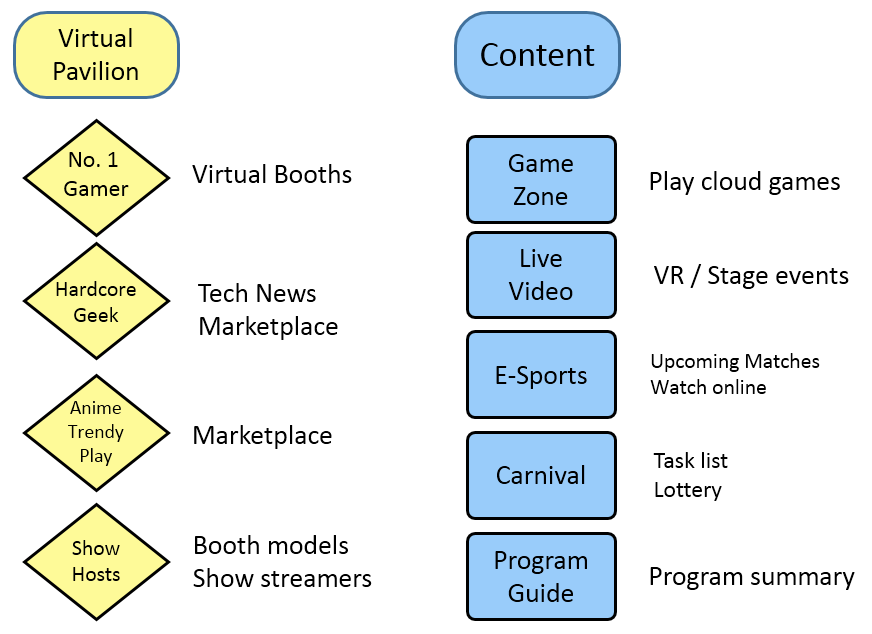
The four virtual pavilions
No. 1 Gamer: The platform has meticulously drawn a map of the exhibition hall area for players. Click on the booth of the corresponding exhibitor to jump to the exhibition area, play games, receive gift packages, participate in competitions, interact with producers, etc.

Anime Trendy Gamer: Gamers into anime were able to check out some great anime products and cute dolls that were available at the event. When a gamer saw the product they liked, they would click "Copy purchase link" and open Taobao to enter the corresponding purchase link and purchase it from their online store.
Hardcore Geek: Gamers could read up on some technology news as well as see limited sales of peripherals you can purchase. Similar to Trendy Gamer, copy the purchase link and buy it on Taobao.
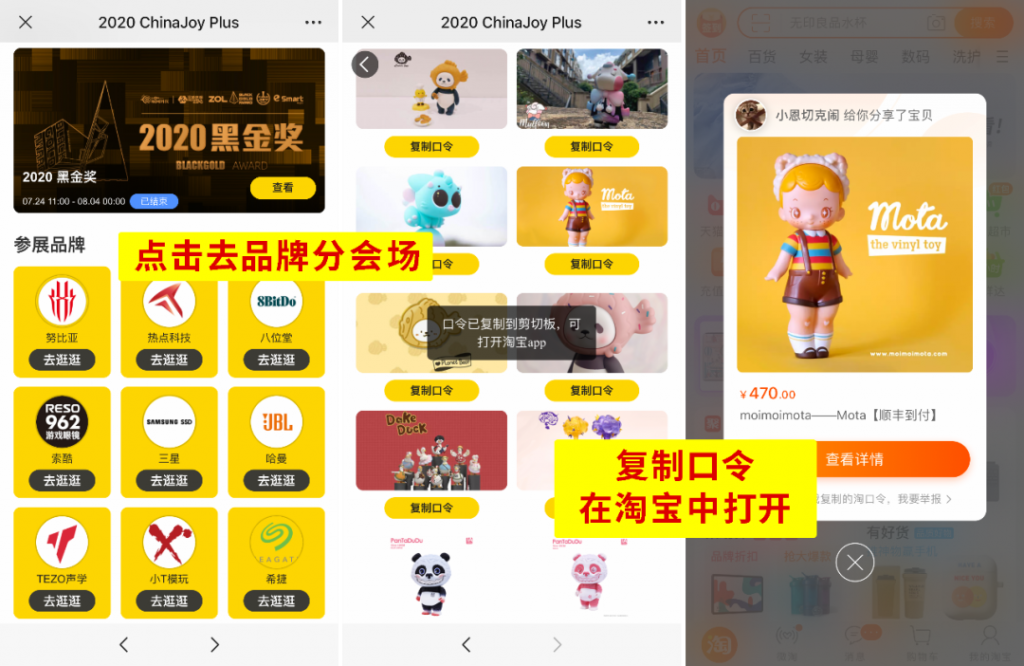
Show Hosts: Booth models have always been a highlight of the exhibition. Even if you don't go to the event to interact with the beautiful ladies, players can still enjoy seeing the stylish ladies through ChinaJoy Plus. This year, there were also many online superstars, game streamers, and KOLs who came on to chat with players watching the event.
The five content sections
Game Zone:
Here, gamers can see a large number of popular games they can try that were at the event. Click the try button to start the game quickly. You can also select games from different companies through the "category" button.
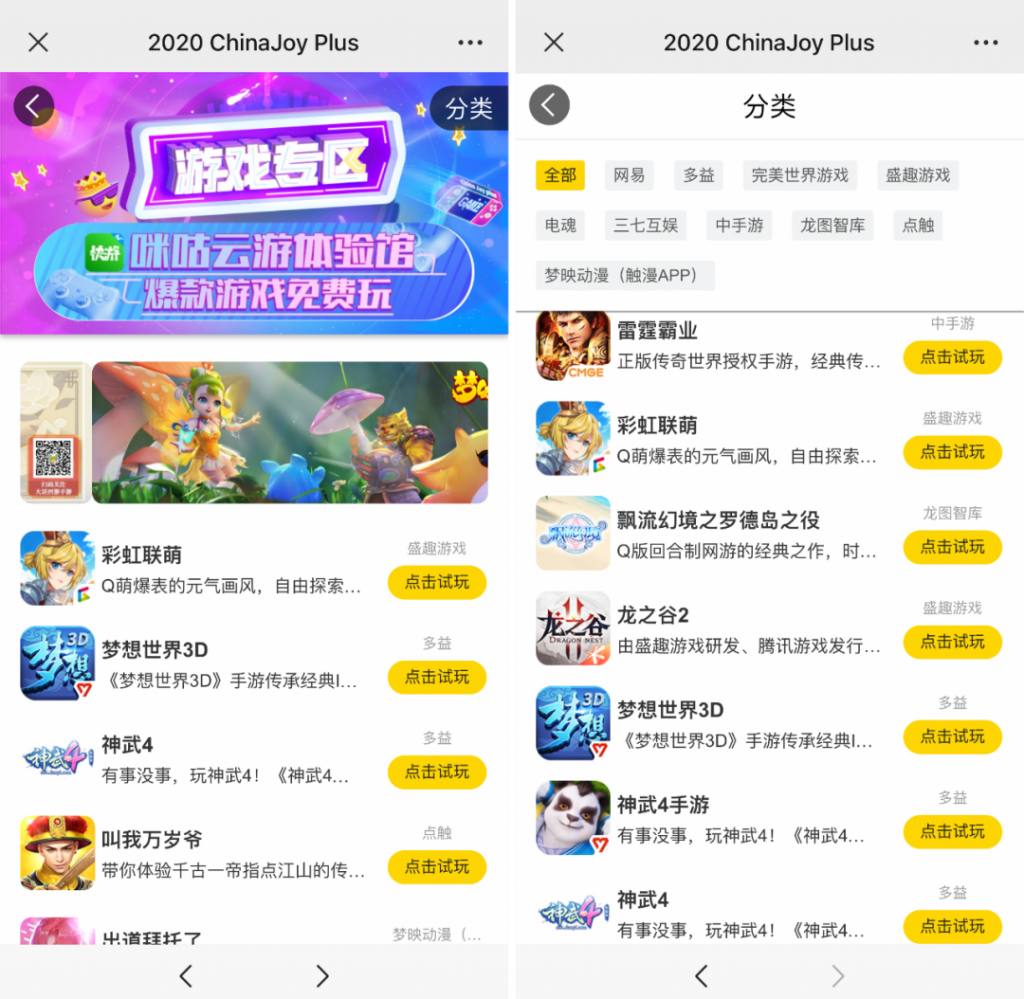
Live Video: As the name suggests, you can watch videos of new games and watch live broadcasts. ChinaJoy had also installed a 360° VR high-definition cameras above each pavilion. The entire conference infrastructure is fully covered by 5G signals to keep them updating all through the event. All you need is a mobile phone or computer that can be connected to the Internet, and audiences from all over the world can watch the ChinaJoy exhibition at any time through this section.
E-sports events: Players can watch events online including "Onmyoji Arena" OPL Professional League, "Shenwu 4 Mobile" CJ Tournament, and other exciting events through ChinaJoy Plus.
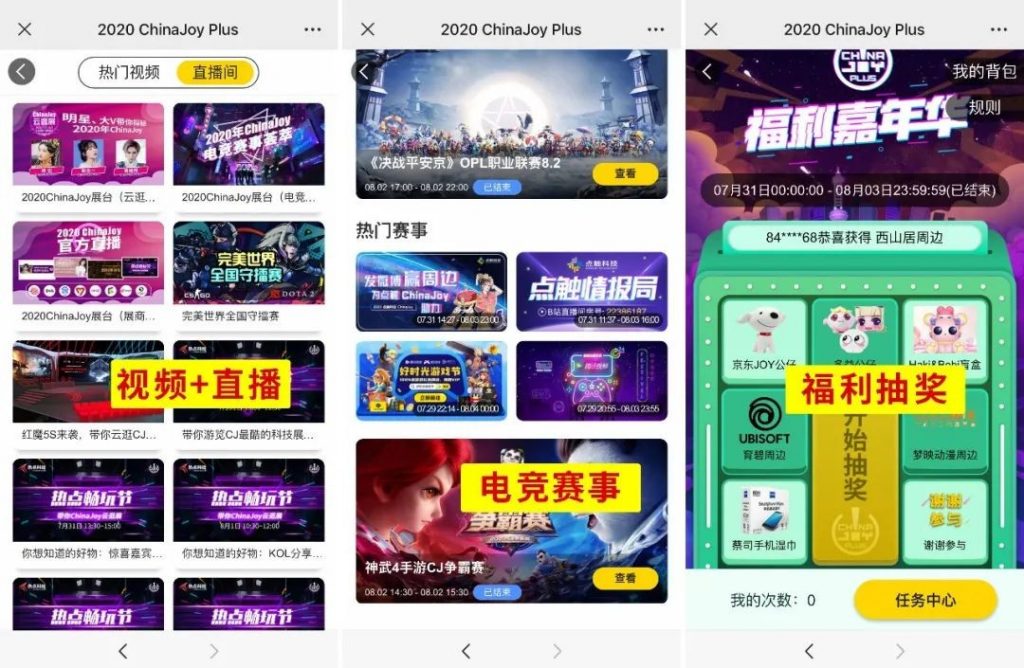
Carnival: By completing various tasks in the task center, you can get the number of lottery draws. Participate in the lottery have the opportunity to win dolls, blind boxes (boxes with unknown items inside), peripherals, and other wonderful gifts. People at the event can do participate in experiences around the expo floor to win draws for their online counterpart.
Program guide: Here, you can quickly browse all the popular events, live broadcasts, e-sports, welfare activities, etc., to facilitate players to find exciting spots to check out all day.
Bringing new opportunities to more industries
In the future, Cocos will use a more entertaining, better interactive experience to help more events like ChinaJoy bring innovation to their show. We also hope that in the future, we can provide better forms and innovative ideas in new directions such as cloud games, interactive videos, and online education.
During the special period of the epidemic, China's game industry has grown strongly and has made positive contributions to the country's economic and social development. Digital cultural products have become an increasingly important form of cultural consumption and foreign cultural trade. The development of ChinaJoy is like the epitome of China's game industry. Domestic games have grown from scratch, from small to large, and burst out with more vitality.
Cocos is bound to become a virtual scene of online entertainment, a profoundly immersive content creation tool, and provides industry-wide solutions.








